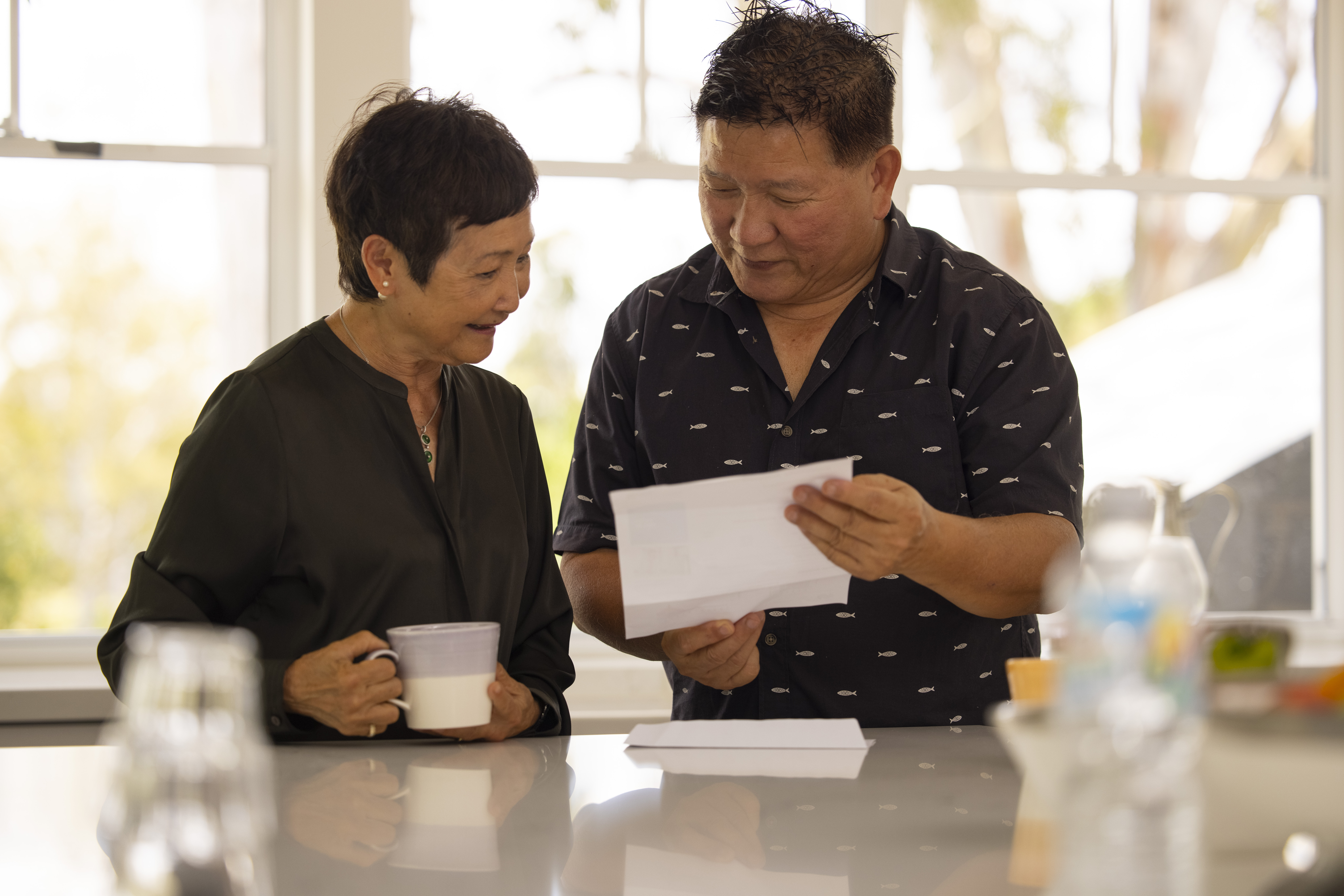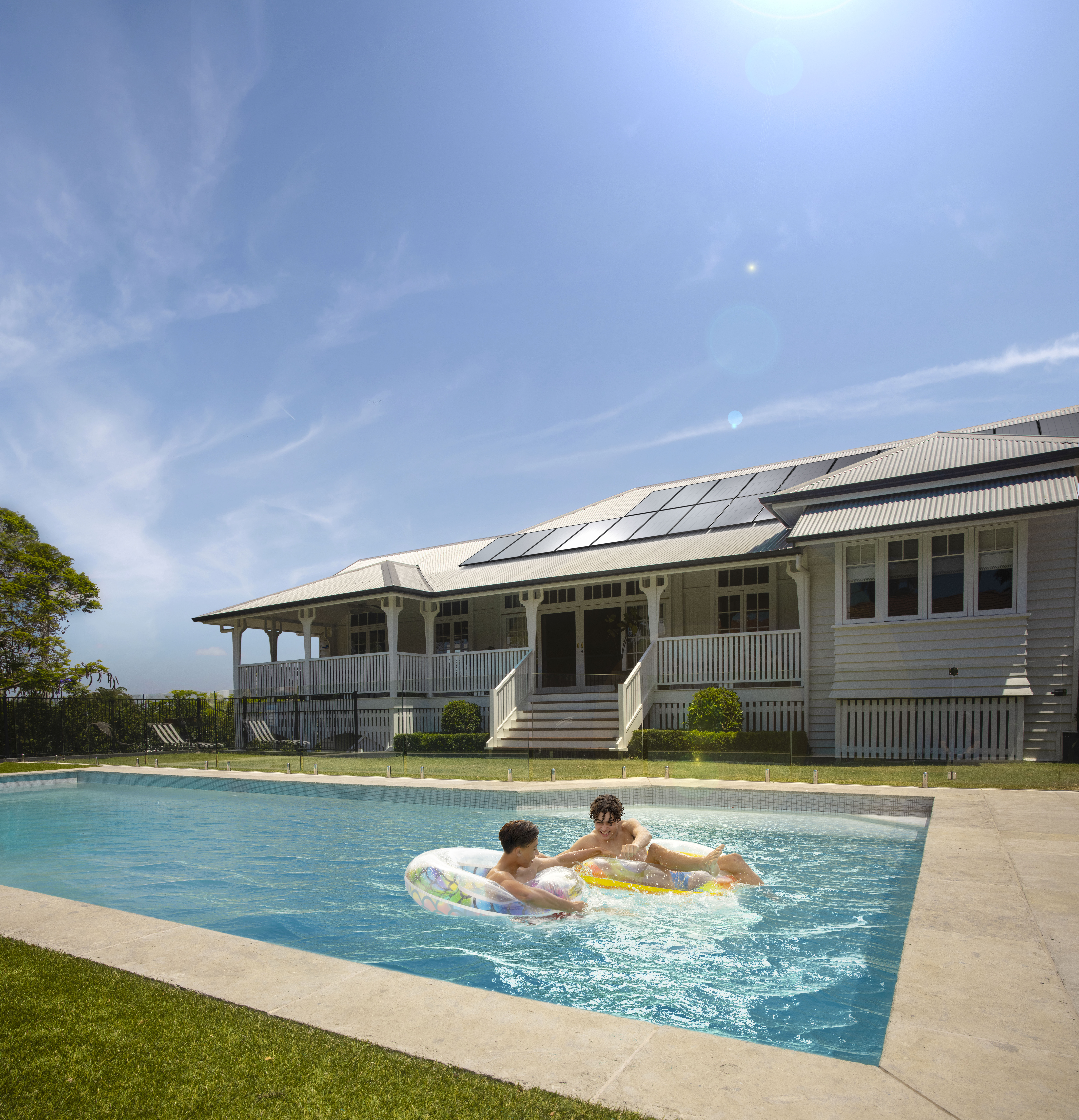Bifacial Solar Panels: A Smart Choice for Australian Homes

Solar panels are becoming more popular and affordable in Australia as homeowners and businesses constantly look to reduce their electricity bills and carbon footprint. However, not all solar panels are created equal. Depending on their design, technology, and performance, some offer more advantages.
One of the latest innovations in the industry is the all-black bifacial solar panel, a type of dual-glass panel that uses n-type cells and can generate power from both sides of the module. N-type cells are made of high-purity silicon and have more power, efficiency, and lower degradation rates than previous cell technologies.
This article will explain bifacial solar panels, how they work, and why they are a smart choice for residential applications in Australia.
What are bifacial solar panels?
Bifacial panels are solar modules with a black frame, designed to present a sleek, smart look on roofs. They are covered with tempered glass on both sides to resist environmental and physical stress, such as dust and moisture. The dual glass layers also offer better fire resistance and safety, as well as increased reliability and stability.
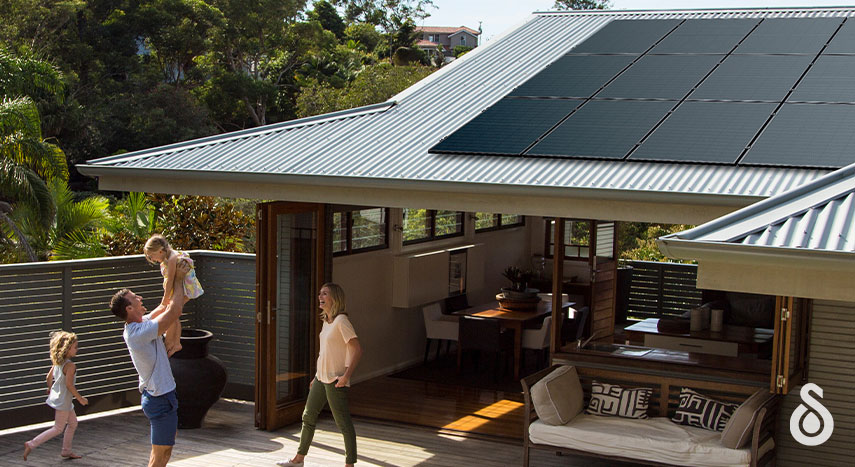
How do bifacial solar panels work?
Bifacial solar panels work similarly to conventional panels but with some differences. The most distinctive feature is that they can produce energy from both the front and back sides of the module, increasing the total power output.
The front of the panel is hit by direct sunlight, while the back side receives the diffused or reflected sunlight from the roof, ground, or other nearby surfaces and converts it into additional power. This is called the bifacial gain, which can range from 0% to 25%, depending on the installation conditions and reflectivity of the surroundings.¹
The amount of power generated by the back side depends on several factors, such as:
- The angle of the panel,
- The panel’s distance from the roof,
- The roof’s colour and material, and
- The time of the day and year.
The following illustration explains how bifacial solar panels work.
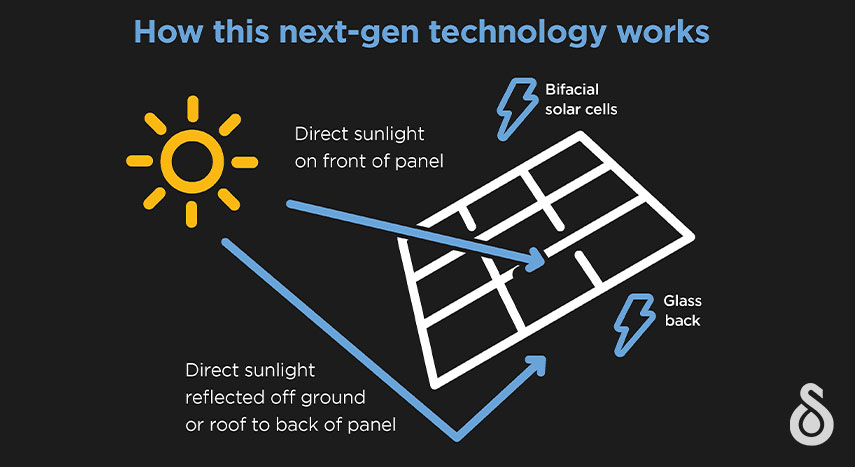
Why are bifacial solar panels a smart choice for Australian homes?
- Higher efficiency and power output: Solahart’s bifacial residential solar panels are rated at 440W and 22% efficiency at standard test conditions.² These ratings are for the front of the panel, and because they are bifacial, they can generate even more electricity from the same roof space, potentially reducing the number of panels required.
- Longer lifespan and warranty: Bifacial solar panels are more durable and reliable than conventional solar panels as they have a dual-glass structure that protects the cells from micro-cracks and has a better fire rating. These panels come with an industry-leading product warranty of 30 years,³ as well as a performance guarantee of 30 years.⁴
- Higher energy production: Bifacial solar panels can generate more energy and save you more money on electricity bills than monofacial panels under similar conditions.¹ The overall gain depends on the installation type and the roof's reflectivity. Typical residential installations with panels flush-mounted to the roof have limited reflected light available for the back side of the panel. However, they could still achieve performance gains of between 1-4%, which can significantly improve solar energy yield over the life of the system.
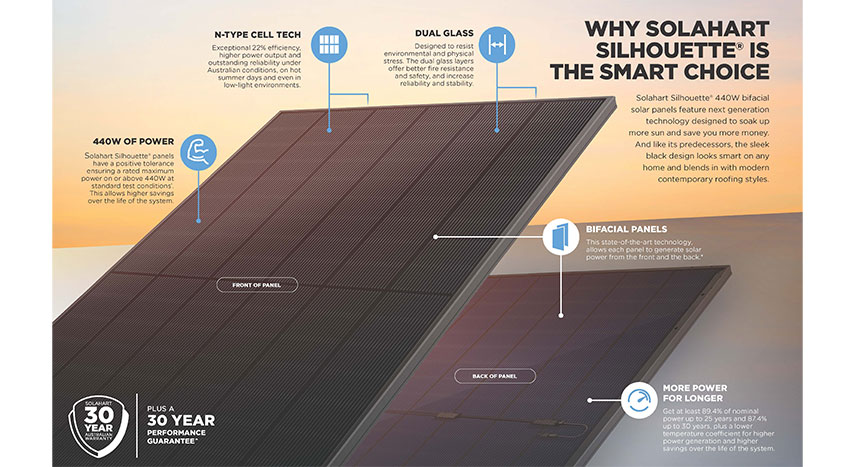
Conclusion
Bifacial solar panels represent a significant advancement in solar technology, providing higher efficiency, greater durability, and enhanced energy production than traditional monofacial panels. For Australian homeowners looking to maximise their solar investment, bifacial panels offer a smart and future-proof solution. With the ability to generate power from both sides, these panels can optimise energy output, making them an excellent choice for reducing electricity bills and contributing to a sustainable future.
Investing in bifacial solar panels can lead to substantial long-term savings, a reduced carbon footprint, and contribute to a greener and cleaner future, aligning with Australia's growing trend of eco-conscious living.
-
Disclaimers
- The bifacial solar panel is designed to generate energy from both the front and rear sides, depending on the amount of light that reaches the rear side. The rear side light depends on factors such as the type of roof, its albedo (reflectivity), and the method of installation. The bifacial solar panel can produce between 0% to 25% more energy than a monofacial solar panel under optimal conditions, but this is not guaranteed. The actual performance of the bifacial solar panel may vary depending on the environmental and operational conditions. Please consult a qualified installer for the best installation method and location for your bifacial solar panel.
- 440W nominal power at Standard Test Conditions (STC - 1000 W/m2, 25±2°C, AM 1.5 G).
- 30-year Solahart Product Warranty covers certain defects with the Solahart Silhouette® panels. Please refer to the ‘Solahart PV Systems Owner’s Guide’ for full details, available on Solahart’s website: https://www.solahart.com/media/3662/owners-guide-solahart-pv-systems-122232-rev-e.pdf.
- 30-year Performance Guarantee is provided by the manufacturer of Solahart Silhouette® panels and guarantees the maximum reduction in power output performance of the panels over a 30 year period. Neither the Solahart Product Warranty nor the Performance Guarantee are intended to exclude, restrict or modify your rights under Australian Consumer Law.

